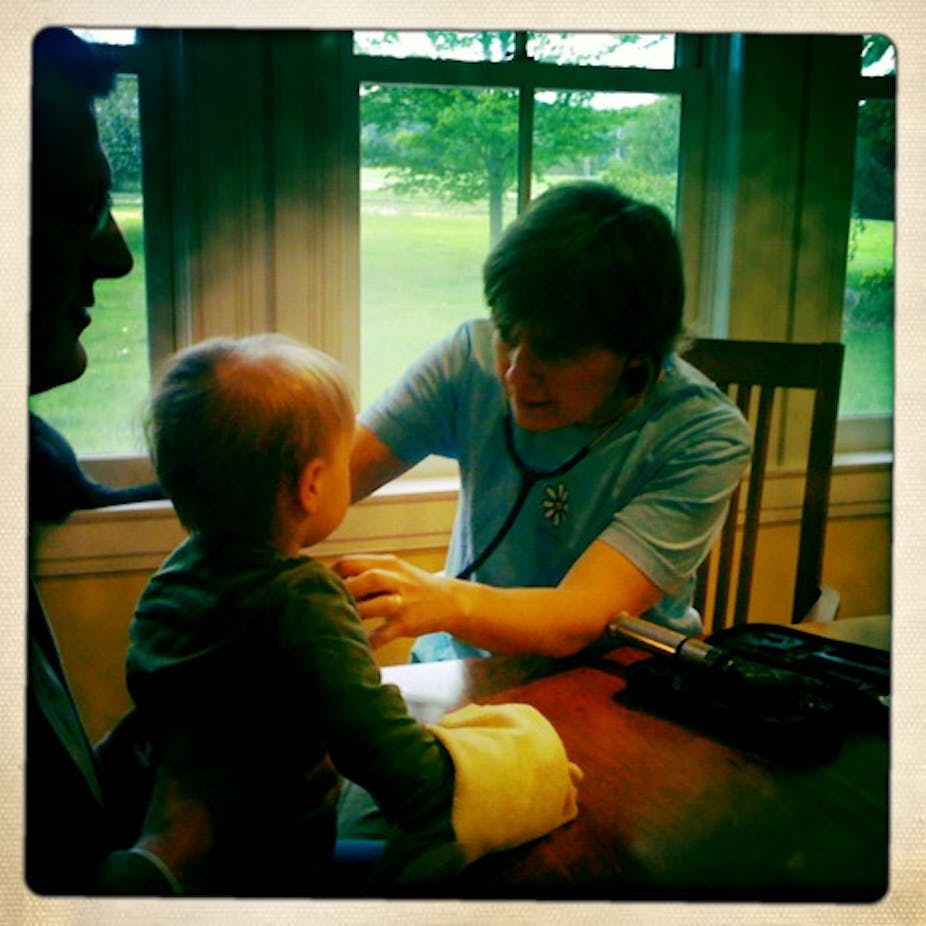The new Victorian Health Plan 2012-22 offers a bleak prognosis: forever rising medical costs, doctors in the wrong places, hospitals overwhelmed.
To make matters worse, it claims that patients can’t be relied on to comply with medical instructions because only 41% of them, the plan reports, are “health literate”.
This means fewer than half of all patients can understand and follow medication instructions, appointment slips and preventive health brochures.
The data comes from a nationwide Australian Bureau of Statistics study from 2006 that linked “health literacy” with other deficits: in prose, document reading, numeracy and problem solving.
And the older and poorer you are, it alleges, the less likely you are to understand health information.
The Victorian Health Plan offers no solution to this problem – it seems the poor and ignorant will always be with us. And since the problem is most acute in the elderly, education is not an option.
But is this really the case? Let’s consider some international examples.
Per capita, Australia spends only half as much on health as the United States but patients have much better outcomes.
We also spend more than the United Kingdom, which, for all its problems, is still more efficient than us in many areas.
All first world countries spend vastly more money per capita than poor countries like Costa Rica or Cuba, yet both of those do as well as or better than the United States in life expectancy.
Sri Lanka and Jamaica are similarly poor “over achievers”.
The reflexive solution to the rising-cost dilemma in market economies is to reconfigure the sick person as a rational consumer, who will minimise costs by complying with professional advice – eat their greens and fruit; give up smoking, binge drinking and fast food and; exercise regularly.
But in the technical paper accompanying the Victorian Health Plan, there is another study of people’s own estimate of their health literacy – and they rate themselves much more generously than the ABS.
Perhaps they’re right and they know more about staying healthy than the government realises.
Elderly men and women, who are now in the final decades of their life, arguably reared the healthiest generation of children in history back in the 1950s and 1960s.
They did this by applying knowledge of diet, hygiene and health care.
Their tutors were infant welfare nurses, whom they could visit as often as they liked, and general practitioners, who practised “medicine in the home”.
If a child was too sick to be taken to the doctor, the doctor came to the child.
Their children received free milk instead of soft drinks at school, and as vaccines appeared, they were all immunised.
Other than fish and chips, affordable food was largely unprocessed and prepared at home.
These days the weakness in our health system is concentrated in primary care, with:
too few doctors in the right places because bulk billing in low-income areas reduces doctors’ incomes by around a third;
too many general practitioners who won’t or can’t make home calls;
limited district nursing; and
rationed access to infant welfare (unless you suffer from post-natal depression and can persuade the health authorities that you are in need of more help).
A feverish child today has to be ferried by private car or ambulance to a hospital emergency department rather than having a doctor visit at home.
Most people know about the benefits of healthy eating and exercise, and the risks of smoking, using illicit drugs and over indulging in alcohol.
But putting this knowledge into practice has always been more difficult for the poor and the stressed.
When you need to “get through” the next 24 hours and the fags and french fries help, the “survival choice” is the one that gives you comfort.
George Orwell noted this in The Road to Wigan Pier (1937).
The “over-achievers” of global life expectancy — poor countries with first-world health — understand this. They’ve invested in health-brokers who stand between doctors and patients – nurses and community health workers who provide education and support in community centres and in the home.
Shortages of nurses are even more critical to health outcomes than shortages of doctors in poor countries.
In a lesson for many developed and developing countries, Aceh and Sri Lanka have trained thousands of community mental health workers to provide support for survivors of the tsunami.
So the real key to better health is accessible and sensitive primary care that comes through human contact; it’s not just about relying on written instructions.
We all need help at times.
I’m a health-literate professor but I nearly died in January because I couldn’t see a doctor at home who could authorise a district nurse or a diagnostic scan.
Just one visit from a nurse might have saved the cost of two ambulances, 26 days in hospital, emergency surgery, intensive care, cardiac care, more than 40 pathology tests, three x-rays, an ultrasound, three CAT scans, a nuclear medicine stress test and an MRI.
Reform and innovation in primary and community care are the first steps in reducing the burden on hospitals and the nation’s health budget.
If we shift the focus of health care reform to the home, we’re likely to see better health outcomes and, in the long-term, better bang for our health buck.

